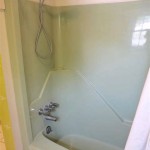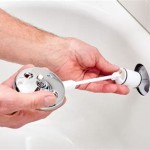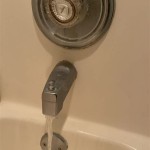Should You Wash Your Dog In The Bathtub?
The question of whether to wash a dog in the bathtub often arises for pet owners. While the bathtub offers a readily available washing station within the home, several factors must be considered before deciding if it is the appropriate choice for a particular dog and situation. This article examines the advantages, disadvantages, and alternatives to bathing a dog in the bathtub, providing insights to help owners make informed decisions regarding their dog's hygiene.
Safety Considerations of Bathtub Dog Washing
Safety is paramount when bathing a dog, and the bathtub presents both potential hazards and opportunities to mitigate risk. The smooth, often slippery surface of a bathtub can pose a significant risk of falls, especially for energetic or elderly dogs. Fear and anxiety can exacerbate this risk, as a dog might struggle to escape the perceived confinement. Therefore, safety measures are crucial.
One primary consideration is the use of a non-slip mat or towel placed on the bathtub floor. This provides traction and can help prevent the dog from slipping and injuring itself. Additionally, monitoring water temperature is essential. Water that is too hot can scald the dog's skin, while water that is too cold can cause discomfort and shivering. The ideal water temperature for bathing a dog is lukewarm, similar to what one would use for a baby. Testing the water with one's inner wrist is a good way to ensure it is comfortable.
Another safety aspect involves the shampoo and cleaning products used. Only shampoos specifically formulated for dogs should be used. Human shampoos often contain ingredients that can irritate a dog's skin or disrupt its natural pH balance, leading to dryness, itching, or allergic reactions. Furthermore, it is important to avoid getting shampoo in the dog's eyes, ears, and mouth. A washcloth can be used to gently clean the face, avoiding direct pouring of water or shampoo.
Finally, consider the physical limitations of both the dog and the owner. Lifting a large dog into and out of the bathtub can be challenging and potentially lead to injury for the owner. Similarly, dogs with mobility issues, such as arthritis or hip dysplasia, may struggle with the physical demands of standing in the bathtub. In such cases, alternative bathing methods or professional grooming services may be more suitable.
Assessing Suitability Based on Dog Breed and Size
The size and breed of a dog play a significant role in determining the appropriateness of bathtub bathing. Smaller breeds are generally easier to manage in a bathtub, as they require less space and are easier to lift and control. Larger breeds, however, present more challenges.
A small breed, like a Chihuahua or a Yorkshire Terrier, can typically be bathed comfortably in a standard-sized bathtub. Their small size means they are less likely to struggle or try to escape, and they can be easily rinsed and dried. However, even with smaller dogs, it is important to ensure they are comfortable and not overwhelmed by the experience.
Medium-sized dogs, such as Border Collies or Beagles, may fit in a bathtub, but require more effort to manage. Their increased size means they take up more space, and they may be more prone to splashing and making a mess. Owners may need to use a handheld showerhead or a large container to effectively rinse the dog. Additionally, drying a medium-sized dog can take longer, potentially requiring the use of a dog-specific dryer or multiple towels.
Large and giant breeds, such as Great Danes or Saint Bernards, are often impractical to bathe in a standard bathtub. Their sheer size makes it difficult to lift them into and out of the tub, and they may not have enough room to move around comfortably. Trying to bathe a large dog in a small space can be stressful for both the dog and the owner, and it can increase the risk of injury. For large breeds, alternative bathing options such as using an outdoor washing station, a walk-in dog shower, or seeking professional grooming services are generally more suitable.
Breed-specific considerations also apply. Dogs with thick double coats, such as Huskies or Malamutes, require thorough rinsing to remove all traces of shampoo. Failure to do so can lead to skin irritation and matting. Dogs with wrinkly skin, such as Bulldogs or Shar-Peis, require special attention to clean and dry the folds to prevent infections. These breeds may need more specialized care than can be easily provided in a standard bathtub setting.
Alternatives to Bathtub Dog Washing
While the bathtub is a common choice for washing dogs, several alternatives exist, each with its own set of advantages and disadvantages. These alternatives can be more suitable for certain dogs or situations, providing a safer and more efficient bathing experience.
One alternative is using an outdoor washing station. This can be as simple as a garden hose and a bucket of water, or a more elaborate setup with a dedicated wash tub and a handheld showerhead. Outdoor washing is particularly well-suited for larger dogs or dogs that are excessively dirty, as it eliminates the mess inside the house. However, outdoor washing is weather-dependent and may not be feasible in cold or inclement weather. Additionally, owners should be mindful of local regulations regarding water usage and detergent runoff.
Another alternative is a walk-in dog shower or a dedicated dog washing station. These are typically designed with a low entry threshold, making it easier for dogs of all sizes and ages to enter and exit. They often include features such as adjustable showerheads, non-slip surfaces, and built-in grooming tools. While these options can be more expensive than using a bathtub, they offer a more convenient and comfortable bathing experience for both the dog and the owner.
Professional grooming services provide another option for dog bathing. Professional groomers have the experience, equipment, and facilities to safely and effectively bathe dogs of all breeds and sizes. They can also provide additional services such as nail trimming, ear cleaning, and coat conditioning. While professional grooming can be more expensive than bathing a dog at home, it can be a worthwhile investment, especially for dogs that require specialized care or have difficulty tolerating home bathing.
For dogs that are only mildly dirty, spot cleaning may be sufficient. This involves using a damp cloth or dog-specific wipes to clean specific areas of the body, such as the paws or face. Spot cleaning can be a quick and easy way to maintain hygiene between full baths. Dry shampoo is another option for spot cleaning. It is applied to the coat, massaged in, and then brushed out, helping to absorb dirt and oil without the need for water.
Regardless of the chosen method, early and positive reinforcement training is key to making bathing a positive experience for the dog. Introducing the dog to the bathing environment gradually, using treats and praise, and keeping the experience as calm and stress-free as possible can help to build a positive association with bathing. A positive association makes the process easier and minimizes the dog's anxiety.
Frequency of washing is another important consideration. Over-bathing can strip a dog's skin of its natural oils, leading to dryness and irritation. Generally, dogs should be bathed only when necessary, such as when they are visibly dirty or have a strong odor. The specific frequency will vary depending on the dog's breed, lifestyle, and skin condition. Consulting with a veterinarian or professional groomer can help determine the appropriate bathing frequency for a particular dog.

How Often Should You Wash Your Dog American Kennel Club

How To Bathe A Dog In 5 Easy Steps

How Often Should You Wash Your Dog Four Paws

Washing And Brushing Your Dog Rspca Pet Insurance
How Often Should You Wash Your Dog

How Often Should You Bathe Your Dog Forever Vets

How Often Should You Bathe A Dog Central Spca Fresno Ca

How Often Should You Bathe Your Dog Guide Based On Breed Lifestyle

How Often Should You Wash Your Dog Petbarn

How Often Should You Bathe Your Dog Petmd
Related Posts








